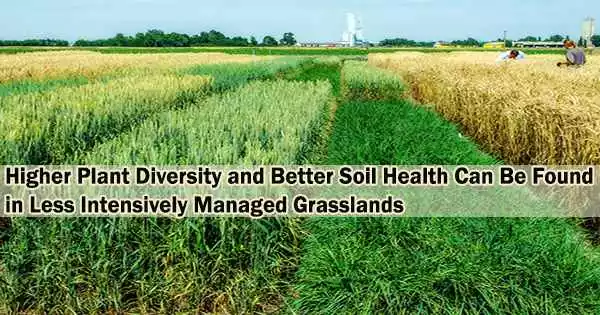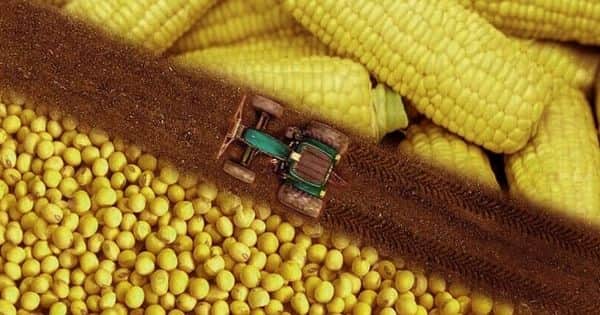For the first time, research has demonstrated that British grazed grasslands with less intense management had, on average, 50% more plant species and greater soil health. The new research could support farmers in improving soil health, biodiversity, and carbon levels in rural areas of Britain.
The British countryside is largely made up of grazed grassland, which is essential to farming and rural communities. This study provides fresh proof that this area, which is sometimes thought of as exclusively being used for food production, may actually be important for boosting biodiversity and soil health.
Researchers at the UK Centre for Ecology & Hydrology (UKCEH) studied 940 plots of grassland, comparing randomly selected plots which sampled the range of grassland management across Great Britain; from intensively managed land with a few sown grassland species and high levels of soil phosphorus (indicating ploughing/reseeding and fertiliser and slurry application), to grassland with higher levels of species and lower levels of soil phosphorus. The plots were sampled as part of the UKCEH Countryside Survey, a nationally representative long-term dataset.
The study tallied the number of plant species in the sample locations and examined soil samples from the same areas to count soil invertebrates and determine levels of carbon, nitrogen, and phosphorus.
Researchers discovered that grassland that was less intensively managed had a greater variety of plant species. Surprisingly, this diversity was correlated with better soil health, as evidenced by higher nitrogen and carbon levels as well as higher populations of soil invertebrates like springtails and mites.
Grassland with different types of plants able to grow tall and flower is associated with improved soil health measures, and is beneficial for creepy crawlies below and above ground. Having this abundance of life in our grasslands can in turn support small mammals and birds of prey, and farmers have told us that they are seeing voles and mice in their fields for the first time.
Dr. Lisa Norton
The Pasture Fed Livestock Association (PFLA), a farmer organization that has set guidelines to maintain and improve soil and pasture health, has 56 primarily beef farms. In the same study, the researchers utilized the same methodologies to assess the plant diversity and soil from grasslands on these farms.
In comparison to intensively farmed plots from the Countryside Survey, the researchers discovered that PFLA farm plots had increased plant diversity, with an additional six plant species on average. These species included various kinds of grasses and herbaceous blooming plants. Additionally, the grassland plants on these farms were frequently higher, a characteristic that has been shown to be advantageous for butterflies and bees.
The research revealed that there may be a time lag between the expansion of plant species and changes in soil health, particularly on farms that have previously been intensively managed, which may explain why Pasture Fed Livestock Association grasslands have not yet demonstrated improved soil health.
Lead author Dr. Lisa Norton, Senior Scientist at UKCEH, says: “We’ve shown for the first time, on land managed by farmers for production, that a higher diversity of plants in grasslands is correlated with better soil health. This work also tells us that the Pasture Fed Livestock Association members are on the right track to increase biodiversity, though it may take longer to see improvements in soil health.”
“Grassland with different types of plants able to grow tall and flower is associated with improved soil health measures, and is beneficial for creepy crawlies below and above ground. Having this abundance of life in our grasslands can in turn support small mammals and birds of prey, and farmers have told us that they are seeing voles and mice in their fields for the first time.”
Dr. Norton adds: “My hope for the future is that our grasslands can be managed less intensively with all the improvements in plant and animal biodiversity and soil health that brings but still remain productive for farmers.”
The study was published in the journal Ecology Solutions and Evidence on 25th November, 2022, and was funded by the UK Research and Innovation Global Food Security Programme.
















